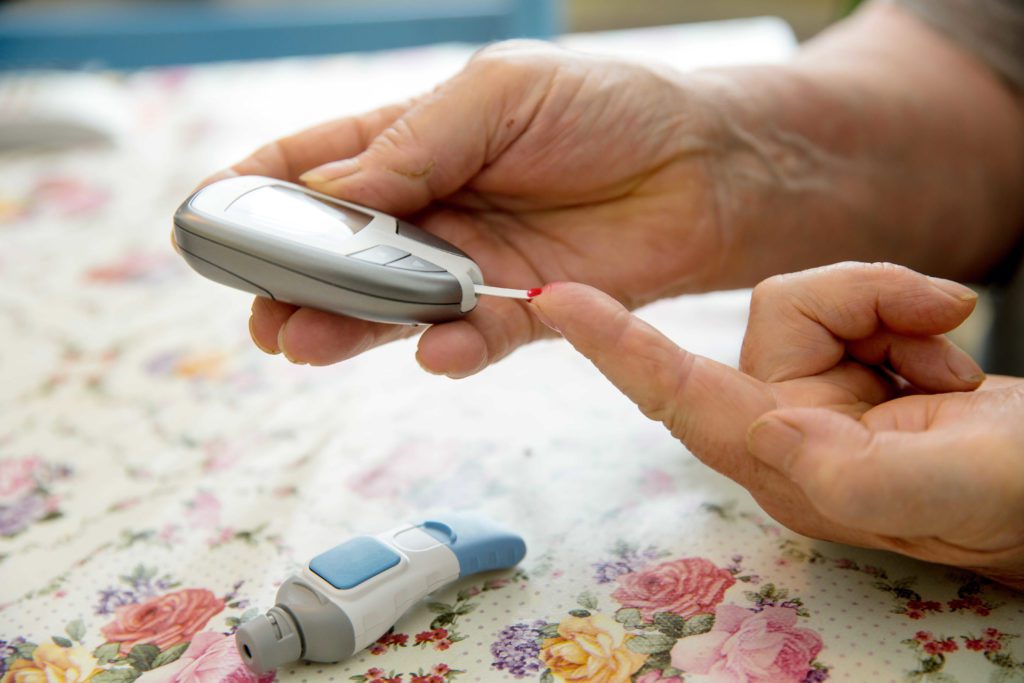The prevalence of Diabetes is multiplying year by year, especially Type 2 Diabetes (T2D). According to a survey done by Healthy Ireland, 854,165 adults over 40 in the Republic of Ireland are at a high risk of developing (or having) Type 2 diabetes.
Type 2 diabetes, as you might know, is associated with insulin resistance, damaged glycogen synthesis, lipid accumulation, and disturbed mitochondrial (the powerhouse or lung of your cell) function.
What’s alarming is that it is mostly followed on by other problems such as dyslipidaemia (lipid problems such as high cholesterol, triglycerides and/or fat phospholipids), hypertension, and cardiovascular diseases.
Unfortunately, people diagnosed with Diabetes are usually overwhelmed and disappointed and can think that they will be resigned to a dull and restrictive lifestyle. Often they don’t realize that they can still manage Diabetes very well by paying some little attention to medication and in particular nutrition and physical activity.
Regular physical workouts is one of the most powerful tools that can help in controlling blood sugar levels and managing T2D. But for many people the thought of going to the gym is so daunting that they instead pick brisk walking, cycling, jogging and believe that those activities will do.
That’s fine. But, what if I tell you that these physical activities are not enough. Yes, experts have conducted many studies to gauge the role of physical activity in managing T2D. While a few studies reported that Aerobic exercises could better insulin resistance and dyslipidemia in Diabetic patients. Recent studies have indicated that Resistance Training can be many more times beneficial for Type 2 Diabetic patients.
A study claimed that Resistance Training (also called weight training or strength training) enhances muscle mitochondrial performance and boosts muscle mass. These changes promote insulin responsiveness and glucose control, thereby improving the overall metabolic health in people with T2 Diabetes.
The study also reported a consistent routine of Resistant exercise leads to beneficial metabolic responses of both HbA1c (linked to blood glucose levels) and insulin sensitivity. (Source: https://www.ncbi.nlm.nih.gov/pmc/articles/PMC5335813/)
The American College of Sports Medicine (ACSM) emphasises the importance of Resistance Training to treat T2D. The joint position statement by ACSM and the American Diabetes Association (ADA) stated that resistance training could enhance insulin action and the quality of life, by regulating the blood glucose, lipids, and cardiovascular risk factors. (Source: https://www.ncbi.nlm.nih.gov/pmc/articles/PMC2992214/)
Now when I say Weight Training, people might assume it as weightlifting — Nope, it’s different from bodybuilding or lifting dumbbells or bulky machines. Weight or Resistance Training involves putting muscles under pressure to strengthen bones and muscles.
Practically, Aerobics and other physical activities require a large group of muscles to work for long periods. Considering that most patients with T2D are overweight, often accompanied by weaknesses, physical disability, visible impairments, or cardiovascular burdens it becomes challenging to achieve the frequency and intensity of exercise needed to control T2D.
On the other hand, Strength or Weight Training utilizing muscular strength to move or lift a resistive load, reactivating single muscle groups can better achieve the goal. For example, just a bicep curl or a chest press.
Another study showed moderate to intensive Strength Training, in combination with weight loss is proven to be beneficial in older diabetic patients, than regular Aerobic Exercises.
It can lead to improved glycemic control (decreased HbA1c) and muscle strength. But do ensure that your gym has a model that supports high-intensity resistance training. (Source: https://www.ncbi.nlm.nih.gov/pubmed/12351469)
While researchers are doing their best to study and give us useful information, a great deal depends on us to use the findings of these studies and the data to improve the quality of our lives. The more initiatives you can take to manage T2 Diabetes, the greater control you will gain.
Resistance training can lead to better blood sugar control and a reduced risk of complications – Why not make sure you add Weight Training to your routine.
Hope you like this blog. If you did, please do share it with your friends and family.
Sources:










